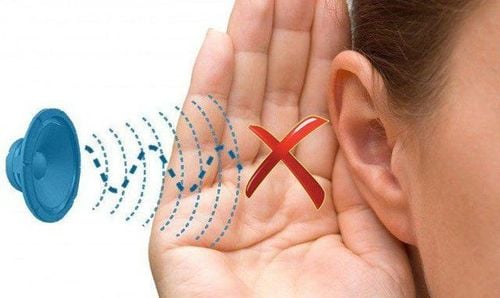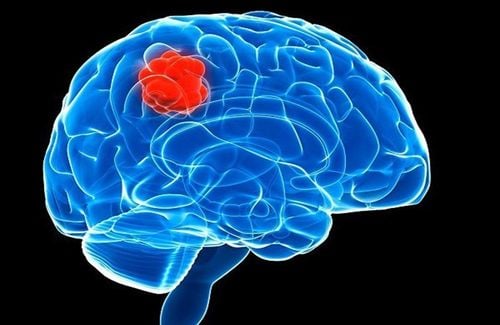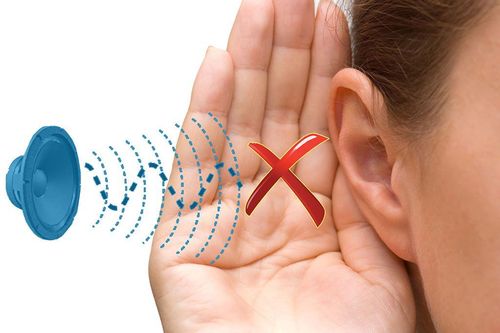This is an automatically translated article.
Neurofibromatosis type 2 is one of the hereditary neurofibromatosis diseases caused by a disorder of chromosome 22. Although benign, tumors can affect hearing or balance problems.1. What is hereditary neurofibromatosis type 2?
Neurofibromatosis type 2 (NF2) is a dominantly inherited disease caused by a disorder of chromosome 22. NF2 is a rarer, more serious neurofibromatosis that does not appear as early as NF1.Neurofibromatosis type 2 involves bilateral vestibular nerve sheath tumors, known as auditory neuromas. Although benign, tumors can affect hearing or balance problems.
The risk of developing cancer in neurofibromatosis type 2 is relatively low, but there is a higher risk of developing tumors in other areas of the nervous system, such as schwannomas. other neurological conditions, meningiomas (usually slow-growing), gliomas (including membranous cell tumors of the endothelial canal in the spinal cord and brain).
Other tumors of the nervous system are also benign, but they have serious health effects, especially when many tumors appear in or near the brain parenchyma.
2. Symptoms of neurofibromatosis type 2
Because the tumor grows on both nerve fibers in the ear, the first symptom of type 2 neurofibromatosis is hearing loss. In addition, the disease has other clinical symptoms such as:There are brown spots, milk coffee on the skin with the amount and time appearing later than neurofibromatosis type 1. There are benign subcutaneous nodules. Vestibular symptoms such as dizziness, balance disturbance, tinnitus. Cataracts can appear early.
3. Diagnosis of neurofibromatosis type 2
Like neurofibromatosis type 1, hereditary neurofibromatosis type 2 is diagnosed primarily on the basis of clinical examination. DNA genetic testing can help detect NF2 early in children before clinical manifestations.Lesions in the central nervous system or brain can be detected by CT scan, MRI. MRI scans help confirm the diagnosis of vestibular neuroma or meningioma.
Diagnostic criteria for neurofibromatosis type 2 include:
The tumor originates from the bilateral vestibular nerve, which has hearing and balance functions. Family history of close relatives (parents, siblings, children) with NF2 plus vestibular schwannoma (detected before age 30) or with any 2 of the fibrocystic tumors neuromas, gliomas, meningiomas, cataracts. Detected a vestibular schwannoma before age 30 and had schwannoma, glioma, meningioma, and cataract. Detecting many vestibular schwannomas before the age of 30 and having schwannomas, gliomas, meningiomas, and cataracts.

U sợi thần kinh loại 2 có thể được chẩn đoán nhờ chụp MRI
4. Treatment of neurofibromatosis type 2
Neurofibromatosis type 2 in particular and neurofibromatosis in general do not have a specific treatment method. Tumors in patients with neurofibromatosis type 2 may be non-progressive or slow-growing. Surgery is the mainstay of treatment in cases where the tumor is advanced and causes neurological problems, which can even threaten brain and spinal cord function. Once diagnosed with neurofibromatosis type 2, patients need to be closely monitored for tumor progression.With bilateral auditory neuroma, the patient is indicated for surgery in case the patient can no longer hear or the tumor is small. The goal of surgery is to remove the tumor while preserving nerves and restoring hearing function.
With vestibular glioma, localized radiotherapy is performed on patients with neurofibromatosis type 2. However, this method can affect the patient's hearing.
Removal of meningiomas or endothelial cell carcinomas is done in cases where the tumor is too advanced, compressing, and affecting the function of the adjacent brain or spinal cord.
Neurofibromatosis type 2 directly affects bilateral vestibular nerves, causing hearing loss and vestibular symptoms such as tinnitus, dizziness, loss of balance. Therefore, to protect health and prevent complications, when detecting signs related to neurofibromatosis type 2, patients need to go to the hospital to be examined by a neurologist. Currently, Vinmec International General Hospital is one of the most prestigious medical treatment units for neurological diseases in Vietnam. The Department of Neurology at Vinmec has the function of examining, diagnosing, consulting and treating diseases related to neurological factors.
Visiting neurological diseases at Vinmec, customers will be:
Visited by a team of highly qualified and experienced specialists such as: Doctor Nguyen Thi Minh Phuong, Doctor Bui Ngoc Phuong Hoa, Doctor Dr. Vu Duy Dung ... State-of-the-art equipment, comparable to major hospitals in the world: The most modern operating room in the world; The most modern silent magnetic resonance imaging machine in Southeast Asia; The 16-sequence PET/CT and SPECT/CT systems help in early detection of neurological damage even when there are no symptoms of the disease. Apply the most advanced intensive treatment techniques in the world in treatment.
Please dial HOTLINE for more information or register for an appointment HERE. Download MyVinmec app to make appointments faster and to manage your bookings easily.













